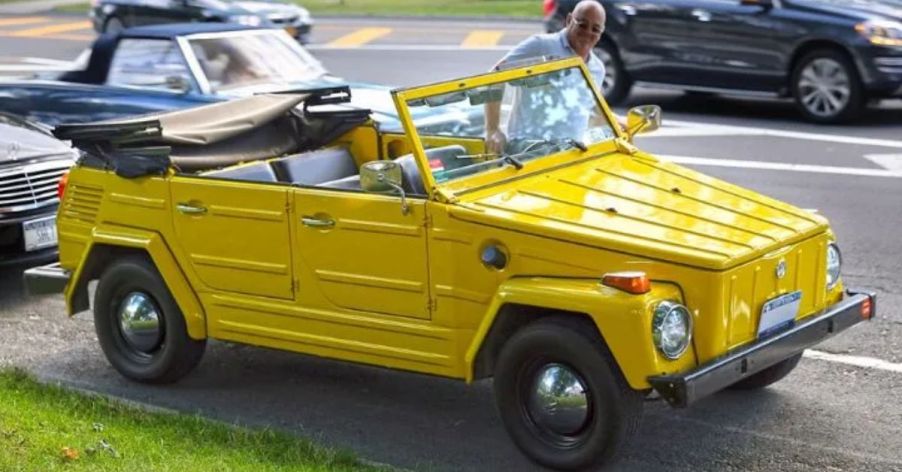
16 Cars That Went from Trendy to Tragic

Once celebrated as groundbreaking designs with immense potential, some cars were poised for success—or so we thought. Factors like unreliable engineering, changing market trends, and fierce competition turned these promising vehicles into forgotten relics. Here are 16 cars that, despite their initial promise, became obsolete and lost their once-bright luster.
Chevrolet Vega

The Chevrolet Vega was initially celebrated for its modern design and lightweight frame. However, it quickly became notorious for rusting and experiencing frequent mechanical issues. Once praised for its innovation, many Vegas have deteriorated into unsightly clunkers.
AMC Pacer

Famed for its wide, rounded shape and quirky design, the AMC Pacer made waves in the 1970s. Unfortunately, poor performance and reliability issues plagued the vehicle, leaving many models rusting in garages or junkyards. These rust buckets highlight the car’s failure to stand the test of time.
Chrysler K-Car

In the 1980s, the Chrysler K-Car played a significant role in the automotive market because it was affordable and practical. However, the cars became money pits over time, forcing drivers to switch cars. Despite the sad ending, many still consider this car a beacon of nostalgia.
Renault Dauphine

Stiff competition and tough times plagued the Dauphine, forcing Renault to find other ways to make money. The car was at the top of the game in the 1950s, but the recession left people yearning for change while still looking for value for money. Newer models with lower price tags came in, and thus, the car was edged out.
Volkswagen Thing

On paper, this car ticked all the checkboxes it needed to, but practically speaking, it was a hazard. Designed as a fun, utilitarian vehicle, the Volkswagen Thing gained a small but loyal following. Still, with the advent of new safety regulations and changes in tastes, the car became obsolete.
Dodge Omni

This affordable compact car was introduced in the 1980s. It shared elements with the Plymouth Horizon but didn’t quite catch on as its sibling. Despite some promising offerings, Dodge was forced to go back to the drawing board and shelf this icon.
Geo Metro

The Geo Metro is famous for its fuel efficiency during the gas crisis of the early 1990s. Interestingly, its lightweight frame and lack of power raised safety concerns, steering people off. Many of these once-efficient vehicles now sit unused or in disrepair, far removed from their brief moment of glory.
Plymouth Horizon

A twin to the Dodge Omni, the Plymouth Horizon, was a popular affordable compact car. Compared to the Omni, it did relatively well, leaving the people at Dodge stumped. However, its long-term reliability and performance were lacking, leading many owners to upgrade to more powerful vehicles.
Chevrolet Corvair

The Corvair’s rear-engine design and styling captured attention in the 1960s. Safety concerns and poor handling damaged its reputation, especially after Ralph Nader’s book, Unsafe at Any Speed, criticized its stability. Once a symbol of innovation, it eventually became the top example of automotive controversy.
Plymouth Barracuda

This car started as a classic muscle car with potent engines and striking styling. Despite its performance, it struggled to outshine competitors like the Ford Mustang and Chevrolet Camaro. While it had a solid fan base, the lack of market success led to its downfall, ending its run prematurely.
Studebaker Avanti

With its sleek, futuristic design and sturdy engine, the Studebaker Avanti aimed to be a groundbreaking sports coupe. However, despite its revolutionary aesthetics, the car couldn’t escape Studebaker’s worsening financial situation, and production stopped just two years after its launch.
AMC Gremlin

The offbeat design, featuring a sloped hatchback and compact body, made the Gremlin a standout during the 1970s. It developed a niche following, but its unconventional styling, small size, and subpar performance made it a tough sell against better-performing rivals.
Ford Edsel

Introduced as a mid-priced luxury vehicle in the late 1950s, the Ford Edsel was quite the showstopper. Looking at the pictures, you wonder why your grandparents didn’t get one. The economic recession affected sales, and the high price tag of cars didn’t help matters.
Oldsmobile Cutlass Supreme

This auto was once a top-selling midsize car due to its smooth ride and durability. However, high gas prices and shifting tastes to smaller vehicles put it on the back burner. By the 1990s, the Cutlass Supreme had lost its appeal and was discontinued.
Pontiac Aztek

Unfortunately, Aztek’s unconventional, angular design made it stand out for all the wrong reasons. Its awkward proportions turned off buyers, overshadowing its practicality and utility features. Despite being a trailblazer for crossovers, it became a symbol of poor design and a marketing misfire.
Cadillac Cimarron

The Cadillac Cimarron was General Motors’ attempt at a luxury compact car based on the humble Chevrolet Cavalier. However, the lackluster performance, economy car underpinnings, and uninspired interior failed to live up to Cadillac’s premium reputation. And the high price tag only added insult to injury.


